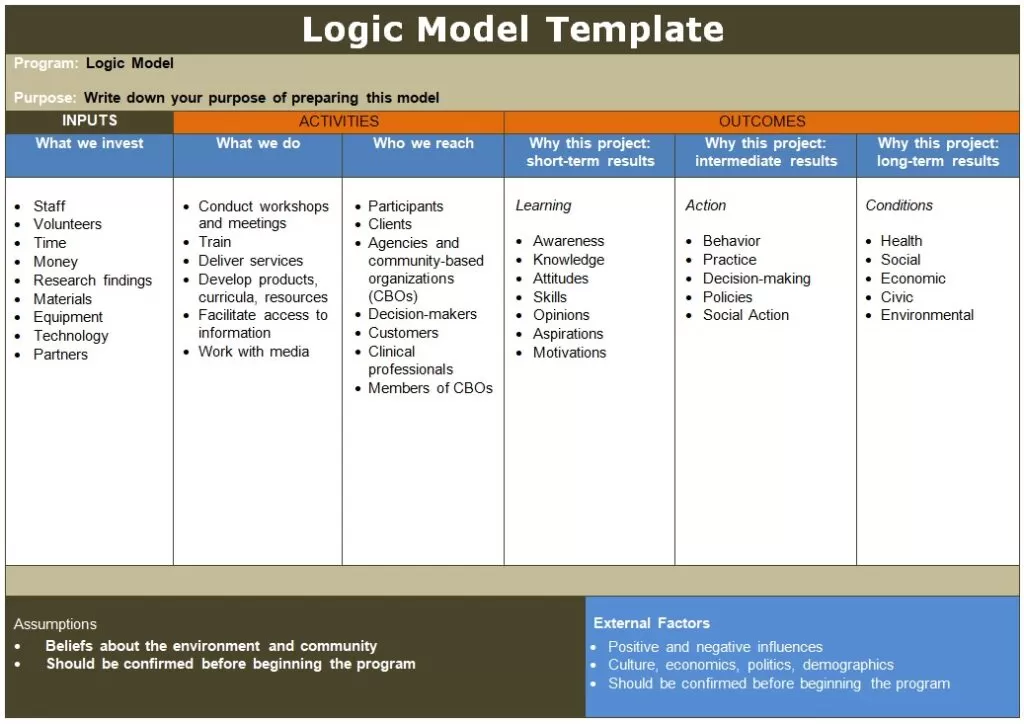A logic model template is illustration of programs resources, activities, and the expected outcomes. It can also be used in programs implementing, evaluating, and planning. We can say if we decide to make a new program, this model will help us in knowing its expected outcomes, and activities. A logic model has five basic components which are inputs, outputs, activities, outcomes, and similarities. We can also say it is a way of sharing our understanding of the relationships among resources we have operated for our program. With the help of this model, we can easily share our understanding of our new program with anyone.
What Makes a Logic Model Attractive and Significant
Logic model holds great importance as it helps the staff of the program to understand the responsibilities of how to make it work and also helps him/her in understanding how actually the program works. We can say if you have made a new program and now you decide to start it, in this situation, this model will help the staff of your company in letting him/her know that how to use it, what are its functions, what can be its positive and negative side effects. It further acts as an instructor which helps the person knowing the system completely and giving them all the important information they need to make it work. A logic model is also important because it helps research practitioner partnerships in establishing their shared goals, strategies, and metrics. It also helps us in focusing our work so that it addresses cross sector concerns.
Examples of a Logic Model
The examples of logic models are as follows;
1: Funding
2: Staff and staff time
3: Volunteer and volunteer time
4: Facilities
5: Supplies
6: Equipment
Furthermore we can talk about it has its outputs and outcomes which are as under;
Outcomes: what we actually do.
Outputs: what difference is there?
How to Create Logic Model?
With the help of these steps we can make a logic model.
1: identify the problem.
2: determine the key program inputs.
3: determine the key program outputs.
4: identify program outcomes.
5: create a logic model outline.
6: identify external influencing factors.
7: identify program indicators.
Assumptions in Logic Model
The beliefs we have about our program, the people involved in it or not, and how it will work are the assumptions in the logic model. Those assumptions, which are unexamined, are a big risk to program success.
How to Make Logic Model Effective?
You should try to prepare an accurate, prominent, and with a vital summary of the activities which will cause change and the outcomes you desire to see for the community and its people.
Benefits of Logic Model
1: A logic model aims to help stakeholders define a better understanding of the targets and goals.
2: A logic model mainly used to Identifying the crucial indicators of success, either in the short or long term time frame.
3: It identifies those fields where research or technical support is required.
4: This model is specifically prepared to support future strategies to evaluate the project.
5: It helps you in discussing your project in a succinct, definite manner. Moreover, it is very prevalent for people with personal or financial interests in their work.
Template for Logic Model

